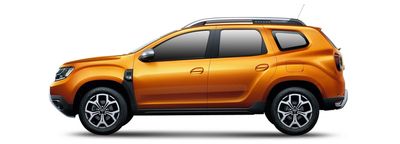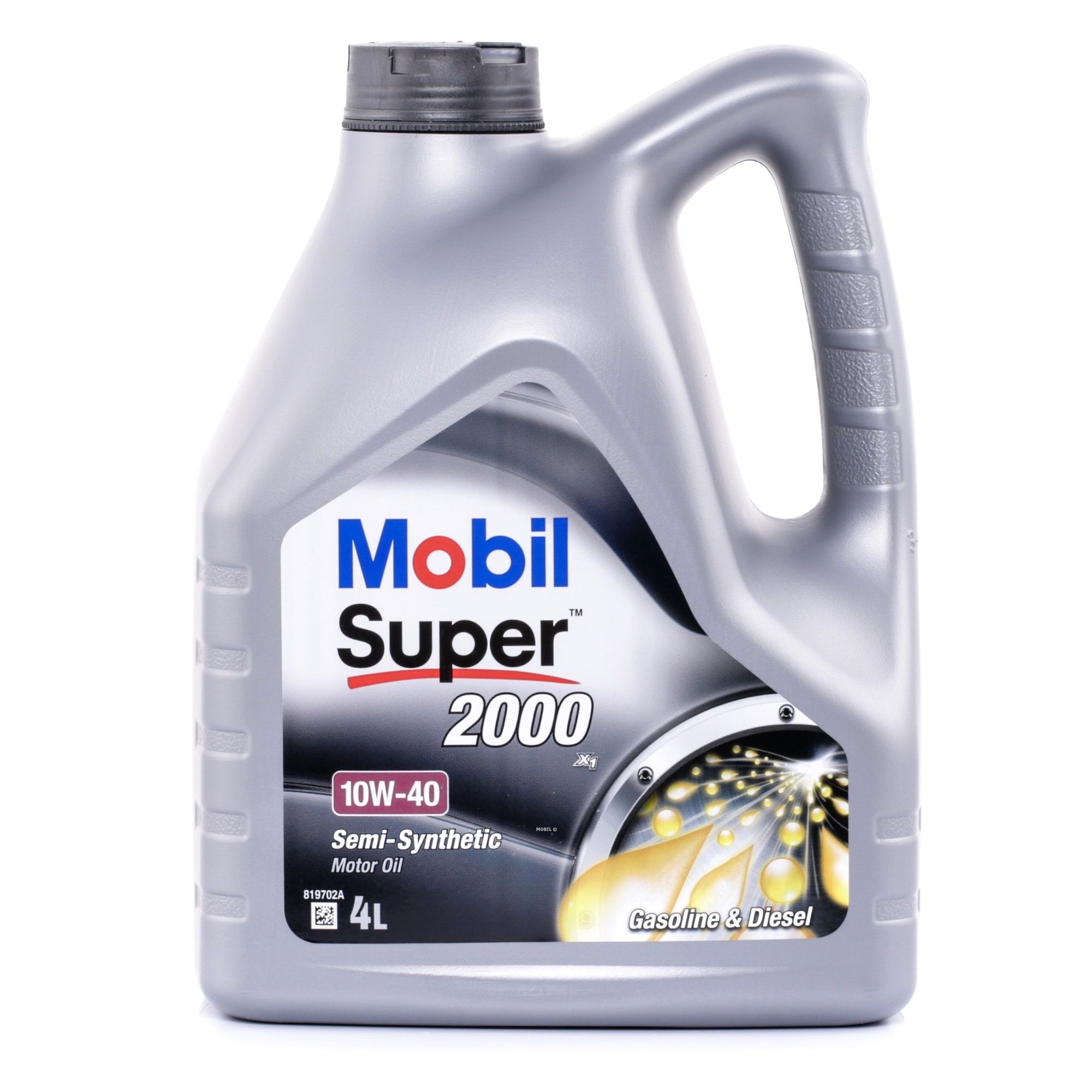Table of Contents
Dacia Duster engines
Since its launch in 2010, the Dacia Duster has developed into one of the most successful budget SUVs and offers a proven Dacia Duster engine range across three generations. The Romanian brand has always relied on simple, robust units that put reliability before technical sophistication.

Dacia Duster engines: Generation I (2010-2017)

The first Dacia Duster generation established the Romanian as an inexpensive entry into the SUV world and was characterized by proven but technically simple engines. With proper maintenance, the mileage reached a respectable 250,000 to 300,000 kilometers, whereby the Dacia Duster diesel engines were significantly more durable than the petrol engines. The Dacia Duster petrol engines often required major repairs to ignition coils, catalytic converters or the timing chain between 150,000 and 200,000 kilometers. The early 1.6-liter petrol engines in particular showed weaknesses in valve adjustment and tended to idle unevenly. The absolute top engine of this generation was the 1.5 dCi with 110 hp, which optimally combined power, reliability and economy and is considered one of the best Dacia Duster engines of all time.
Dacia Duster petrol engines: Generation I (2010-2017)
The Dacia Duster petrol engine range mainly comprised naturally aspirated engines without turbocharging. The 1.6 MPI was available with 77 kW (105 PS) as the entry-level engine and was based on the tried-and-tested Renault K7M unit. Later, the more powerful 1.6 SCe with 84 kW (115 hp) was added, which had a more modern valve control system. However, these Dacia Duster engines suffered from typical problems of older Renault engines: ignition coil defects, catalytic converter problems and occasional timing chain noises characterized the picture. The 2.0 MPI with 100 kW (136 hp) was only available in a few markets and was considered sluggish and thirsty, which is why it was quickly discontinued. The Dacia Duster petrol engines of the first generation were robustly built, but technically outdated and fuel-intensive.
Dacia Duster diesel engines: Generation I (2010-2017)
The Dacia Duster diesels were dominated by the 1.5 dCi from Renault with various power levels from 70 kW (95 hp) to 81 kW (110 hp). The Dacia Duster 1.5 dCi with 81 kW (110 hp) became the most reliable and popular engine of the entire generation. These Dacia Duster dCi engines were based on the proven Renault K9K unit with common-rail injection and turbocharging. Especially the later versions from 2013 onwards with Euro 5 standard and improved fuel injection proved to be very durable and economical. The Dacia Duster 1.5 dCi offered an excellent combination of performance, fuel consumption of only 4.5-5.2 liters per 100 km and high reliability, making it a favorite among frequent drivers.
| Dacia Duster engine | Performance | Fuel consumption | Typical weaknesses | Rating |
|---|---|---|---|---|
| 1.6 MPI | 105 HP | 7.8-8.4 l/100km | Ignition coils, catalytic converter, timing chain | Average |
| 1.6 SCe | 115 HP | 7.2-7.8 l/100km | Valve adjustment, rough idling | Average |
| 2.0 MPI | 136 HP | 8.9-9.5 l/100km | Sluggish, high consumption | Moderate |
| 1.5 dCi | 95-110 HP | 4.5-5.2 l/100km | Very robust, durable | Very good |

Dacia Duster engines: Generation II (2018-2023)

The second Dacia Duster generation brought a significant modernization of the engine range and for the first time relied on turbocharging for the petrol engines. Most Dacia Duster engines of this generation easily reach 200,000 to 280,000 kilometers with proper maintenance, whereby the proven 1.5 dCi diesels continue to be considered particularly durable. The new TCe turbocharged petrol engines initially had teething troubles, but developed into reliable everyday engines. The absolute highlight was the 1.5 dCi Blue with 115 hp - a technical masterpiece with SCR catalytic converter and Euro 6d standard, which offered both power and efficiency. For the first time, there was also an LPG drive with the 1.0 TCe Eco-G, which was particularly successful in markets with low gas prices.
Dacia Duster petrol engines: Generation II (2018-2023)
The Dacia Duster petrol engine range has been completely revised and now relies on modern TCe turbo engines. The 1.0 TCe with 74 kW (100 PS) replaced the old naturally aspirated engines and offered more power and better efficiency despite its smaller displacement. The more powerful 1.3 TCe with 110 kW (150 hp) came from the cooperation with Mercedes and proved to be a powerful and modern drive. These Dacia Duster TCe engines proved to be much more reliable than their predecessors, with only occasional valve coking problems on short journeys. The Dacia Duster 1.0 TCe became the most popular petrol engine of this generation, while the 1.3 TCe was less popular due to its complexity and higher maintenance costs.
Dacia Duster diesel engines: Generation II (2018-2023)
The proven Dacia Duster 1.5 dCi was further developed and offered in various power levels from 85 kW (115 hp). The Dacia Duster 1.5 dCi Blue with SCR catalytic converter and AdBlue injection complied with the Euro 6d standard and continued to offer the usual reliability. These Dacia Duster diesels had modern common-rail injection with up to 1,800 bar pressure and proved to be very robust. The Dacia Duster 1.5 dCi Blue proved to be the most reliable and efficient engine of this generation, with a test fuel consumption of just 4.2-4.8 liters per 100 km and high reliability - ideal for frequent drivers and long-distance journeys.
Dacia Duster LPG drive: Generation II (2018-2023)
From 2019, a Dacia Duster with LPG drive (1.0 TCe Eco-G) with 100 hp was offered for the first time. This combined a 1.0 TCe turbo engine with a 50-liter LPG tank and offered significantly lower operating costs. The Dacia Duster Eco-G proved to be a reliable economy engine, but had limitations in terms of trunk space due to the additional gas tank.
| Dacia Duster engine | Power output | Fuel consumption | Typical weaknesses | Rating |
|---|---|---|---|---|
| 1.0 TCe | 100 HP | 6.2-6.8 l/100km | Occasional valve coking | Good |
| 1.3 TCe | 150 HP | 7.1-7.7 l/100km | Complex, higher maintenance costs | Good |
| 1.0 TCe Eco-G | 100 HP | 6.8 l/100km + LPG | Small trunk | Good |
| 1.5 dCi Blue | 115 HP | 4.2-4.8 l/100km | Very robust, Euro-6d | Very good |

Dacia Duster engines: Generation III (2024-today)
The current Dacia Duster generation is based on a streamlined engine range and state-of-the-art drive technology. All petrol engines are now turbocharged, while the tried-and-tested diesel has been further developed. As the generation has only been on the market since 2024, no long-term experience is available yet, but initial tests show promising results. The top-of-the-range engine is the new 1.2 TCe with 130 hp, which combines sporty performance with high efficiency. The third-generation Dacia Duster engines promise a service life of over 250,000 kilometers, as the experience gained from the previous generations has been incorporated into the development.
Dacia Duster petrol engines: Generation III (2024-today)
The basis of the Dacia Duster engine range is formed by two TCe engines with 1.0 liter (100 hp) and 1.2 liter (130 hp) displacement. The Dacia Duster 1.0 TCe has been revised and now offers improved efficiency and smoothness. The new Dacia Duster 1.2 TCe with 96 kW (130 hp) is considered to be particularly successful and is developing into the best petrol engine of this generation - it offers smooth power delivery over a wide rev range and has so far been free of major production problems. Both Dacia Duster engines feature modern direct injection and turbocharging.
Dacia Duster diesel engines: Generation III (2024-today)
The tried-and-tested Dacia Duster 1.5 dCi has been revised again and is available with 115 hp. This Dacia Duster diesel variant continues the tradition of reliable Dacia Duster dCi engines and complies with the Euro 6d-ISC-FCM standard. The engine is still based on the proven Renault K9K unit, but has been refined in details.
Dacia Duster LPG drive: Generation III (2024-today)
The Dacia Duster 1.0 TCe Eco-G is also available in the third generation and continues to offer favorable operating costs thanks to the bivalent drive with gasoline and LPG.
| Dacia Duster engine | Power output | Fuel consumption | Typical weaknesses | Rating |
|---|---|---|---|---|
| 1.0 TCe | 100 HP | 6.0-6.5 l/100km | No series problems so far | Good |
| 1.2 TCe | 130 HP | 6.3-6.9 l/100km | Modern technology, promising | Very good |
| 1.0 TCe Eco-G | 100 HP | 6.5 l/100km + LPG | Loss of space due to gas tank | Good |
| 1.5 dCi | 115 HP | 4.0-4.5 l/100km | Proven, robust | Very good |

Conclusion: The best Dacia Duster engines of all generations
The development of the Dacia Duster engines shows a continuous improvement across all three generations. While the first petrol engines still struggled with outdated technology, the modern TCe turbo engines offer a successful combination of performance and efficiency. The Dacia Duster diesel engines have remained the benchmark in terms of reliability and economy across all generations.
- Best Dacia Duster petrol engine:
The Dacia Duster 1.2 TCe (130 hp, Generation III) combines modern turbo technology with high efficiency and promising reliability.
- Best Dacia Duster diesel engine:
The Dacia Duster 1.5 dCi (110-115 hp, all generations) offers the best combination of reliability, economy and everyday usability across all generations.
- Best Dacia Duster alternative drive:
The Dacia Duster 1.0 TCe Eco-G (100 hp, Generation II & III) with its bivalent LPG drive for particularly low running costs.
For maintenance and spare parts for all Dacia Duster generations, AUTODOC offers a comprehensive range of original and quality spare parts with fast delivery.















